Rational Inequalities, Partial Fractions, Graphical Representation | Definition, Formula, Solved Example Problems, Exercise | Algebra | Mathematics - Rational Functions | 11th Mathematics : UNIT 2 : Basic Algebra
Chapter: 11th Mathematics : UNIT 2 : Basic Algebra
Rational Functions
Rational Functions
A rational expression of x is defined as the ratio of two
polynomials in x, say P (x) and Q(x) where


1. Rational Inequalities

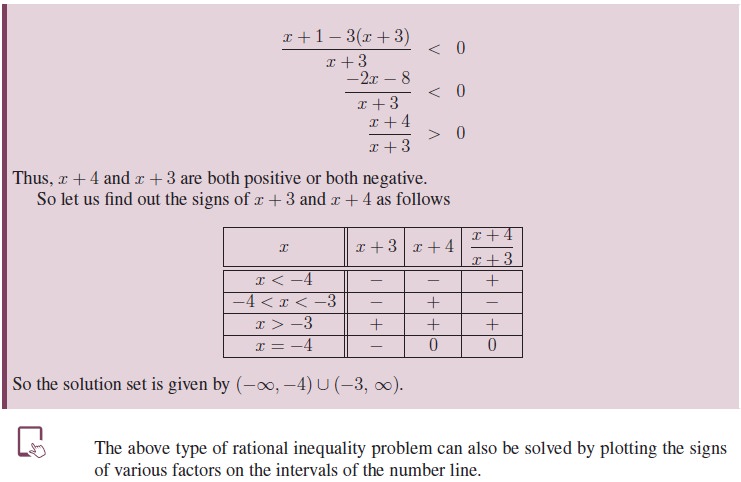
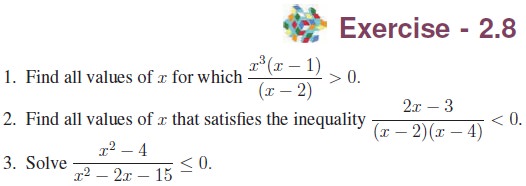
2. Partial Fractions
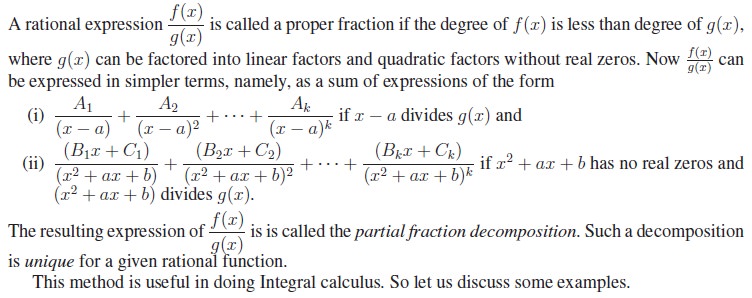
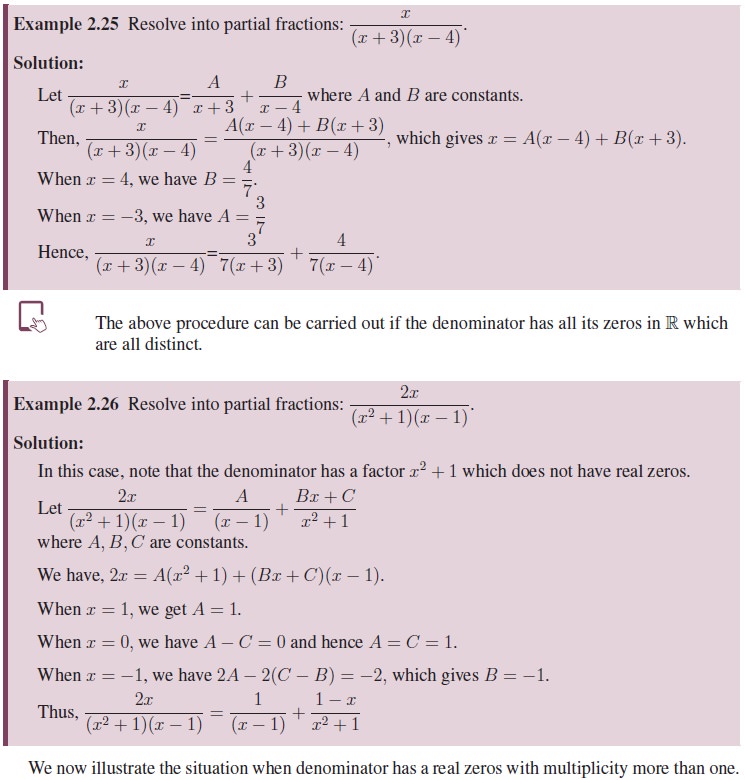


3. Graphical Representation of Linear Inequalities
A straight line ax + by = c
divides the Cartesian plane into two parts. Each part is an half plane. A
vertical line x = c will divide the plane in left and right half planes and a
horizontal line y = k will divide the plane into upper and lower half planes.
A point in the cartesian plane
which is not on the line ax + by = c will lie in exactly one of the two half
planes determined by the line and satisfies one of the inequalities ax + by
< c or ax + by > c.
To identify the half plane
represented by ax + by < c, choose a point P in any one of the half planes
and substitute the coordinates of P in the inequality.
If the inequality is satisfied,
then the required half plane is the one that contains P; otherwise the required
half plane is the one that does not contain P. When c ¹ 0, it is most convenient to take P to be the
origin.
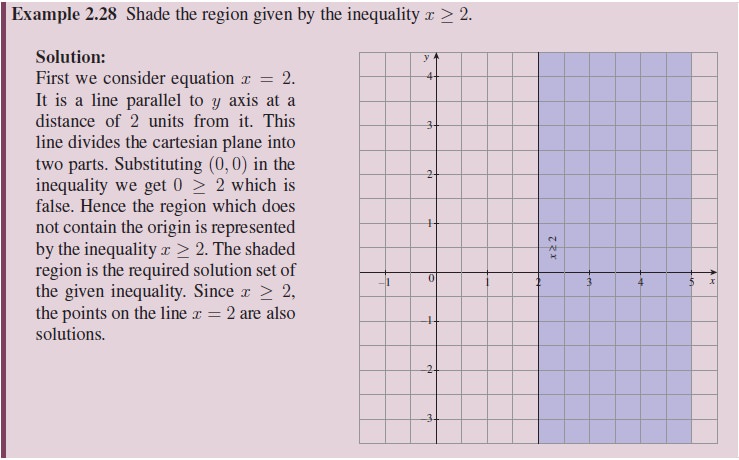
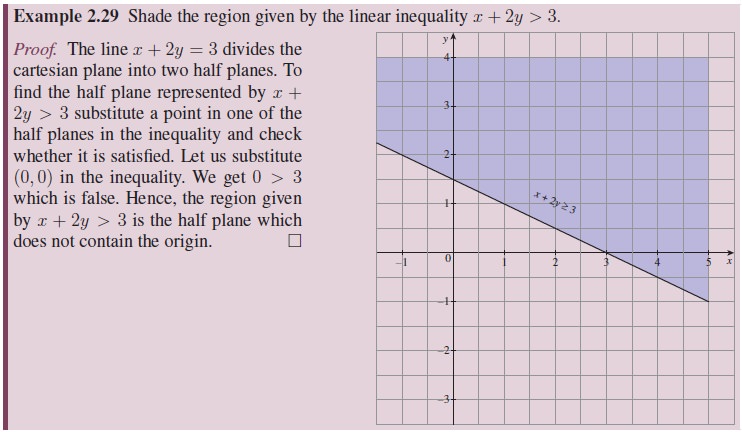
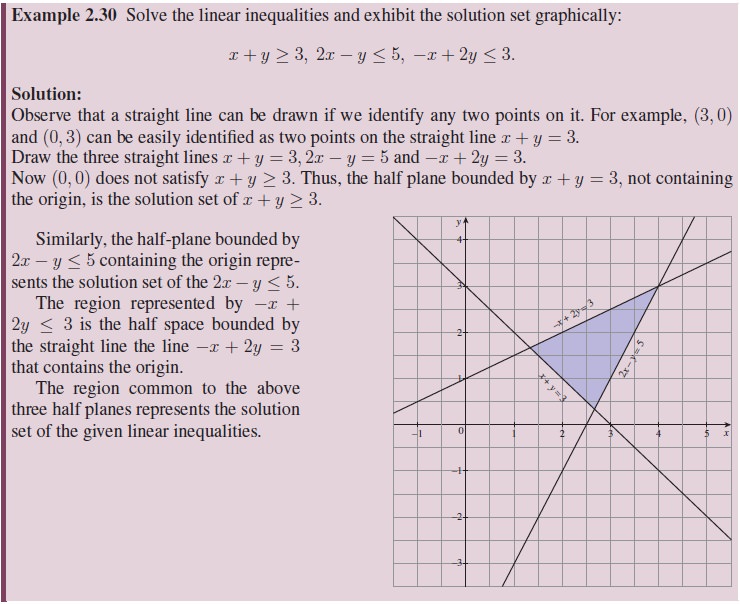
Exercise - 2.10
Determine the region in the plane
determined by the inequalities:
(1) x ≤ 3y, x ≥ y.
(2) y ≥ 2x, −2x + 3y ≤ 6.
(3) 3x + 5y ≥ 45, x ≥ 0, y ≥ 0.
(4) 2x + 3y ≤ 35, y ≥ 2, x ≥ 5.
(5) 2x + 3y ≤ 6, x + 4y ≤ 4, x ≥
0, y ≥ 0.
(6) x − 2y ≥ 0, 2x − y ≤ −2, x ≥
0, y ≥ 0.
(7) 2x + y ≥ 8, x + 2y ≥ 8, x + y
≤ 6.
Related Topics